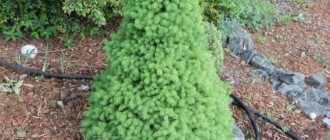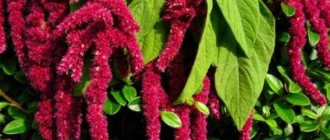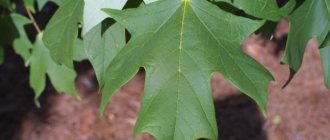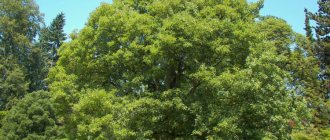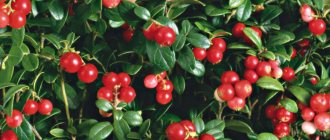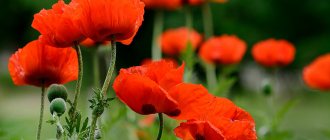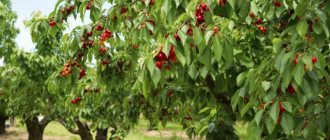Fern-like plants are the most ancient and numerous species of flora on the planet. Humanity knows more than 10,000 varieties of ferns. They are distributed everywhere. Each representative has its own shape, size, characteristic structure and method of reproduction.
Previously, ferns were huge and tree-like. In the modern world, these plants have become indoor and small. They adapt to any conditions, some have a very beautiful shape.
General characteristics of the group
Fern is a genus of spore plants that belongs to the department of vascular representatives of the flora and has 48 families, 578 genera and 10,620 varieties. They prefer damp, cold and marshy places. Most plants grow in tropical forests. Some of them are large and similar to palm trees, which reach a height of 16 meters, and their leaves are up to 4 meters long.
Places of distribution of fern-like plants:
- forest;
- marshy area;
- tree trunks and branches;
- water environment;
- mountain gorges;
- walls of houses;
- deserts;
- sides of country roads;
- agricultural grounds.
The fern is a very ancient life form, and coal is formed from its long-term deposits. The shape of the plant is similar to a green shoot with feathery leaves.
Scientists believe that ferns originated from mosses, but there is an opinion that the latter, as well as mosses and horsetails, appeared from psilophytes.
Since ancient times, there has been a myth about the fern flower. If on the holiday of Ivan Kupala a person sees a flowering plant, he will find a treasure in this place or learn how to get rich. However, this is just a legend, because in fact, the fern does not have a flowering stage.
water ferns
It's amazing, but fern can grow even on the surface of the water. Such varieties can often be found in freshwater reservoirs, rivers and streams of India and Southeast Asia. Like terrestrial ferns, they have graceful, complex fronds. Amateur aquarists love them very much, because, without soil, they ensure the supply of oxygen to the water, while giving the aquarium a highly decorative appearance.
Among such aquatic species, species from the Salviniaceae family are most common. In tropical countries they are even called river weeds. Reproducing very intensively, they take over vast expanses of water, preventing the movement of river vehicles, the operation of hydroelectric power stations, and clogging the nets of fishermen while fishing.
Another widespread type of ferns growing on water. Unlike Salviniaceae, they, on the contrary, belong to useful plants. Rice growers specially plant them on rice plantations because they suppress the growth of weeds, and their roots and leaves are capable of accumulating nitrogen.
Structural features
A fern is a perennial plant that can be either a bush or a herb.
The structure is as follows:
- roots;
- shoots;
- petioles;
- leaf plates.
The plant does not have true leaves, there are only branches that grow in the same plane. They are called vaii (pre-shoots). Looking at them, it is difficult to discern where the stem ends and the leaf forms. Fronds perform two functions: sporulation and photosynthesis.
All roots of the plant are adventitious. The primary rod does not develop, but instead a root is formed from the stem, or less often from the leaf. The shoots are varied in external and internal structure. Creeping stems are called rhizomes. They can be short or long. The stem consists of epidermis, conductive and mechanical tissue. Leaves immediately grow from the rhizome upward.
Ferns reproduce by spores. The latter are formed on the underside of leaves in sporangia.
What is a plant?
The fern's unique ability to adapt to its environment has allowed it to survive all disasters and climate changes.
A fern has no roots in the usual sense. Their role is played by a horizontal stem, from the axils of which adventitious feeding roots emerge.
From the buds on ground stems grow scaly, feathery leaves - fronds. They form a complex system of shoots - flat branches. The fronds participate in photosynthesis, and spores ripen on their underside. The length and number of processes varies for each species, some are twisted in the shape of a snail or spiral.
Kinds
There are many varieties of ferns in nature, which are divided into ancient and modern.
There are 4 main classes:
- Psilotoides.
- Horsetails.
- Marattiaceae.
- Real ferns.
Class psilotoides
They grow on tree trunks, in rocks, and on soil with a high concentration of organic matter. The psilotoides have virtually no root.
This class of higher plants has two genera:
- Psilotes. They consist of erect, branched stems that grow from rhizomes. Conductive tissue includes phloem and xylem, which transport useful substances throughout the plant. They do not have a leaf plate, but only leaf-shaped primordia. Photosynthesis occurs in the stem.
- Uzhovnikovye. They have one leaf, which is divided into spore and upper parts. They already have rudiments of cambium and a conducting system.
Class Equisetae
Horsetail is a vascular plant that is native to Eurasia and North America. It got its name because of its resemblance to a horse's tail. It always grows like grass.
The most famous representatives of horsetail:
- giant;
- wintering;
- Schaffner.
Horsetail shoots consist of nodes and internodes, which alternate regularly and proportionally with each other. The nodes contain: a bud with scales, which replaces leaves, as well as lateral branches. Stems are responsible for photosynthesis and nutrient transfer. Horsetail has a rhizome and adventitious roots.
Class Marattiaceae
Marattiaceae are ancient higher ferns that appeared during the Lower Carboniferous period. Distributed in tropical forests, some forms are grown in greenhouses.
The roots of Marattiaceae are adventitious, and in ancient forms a mantle of roots formed around the trunk. Their fronds grow up to 6 meters long and are arranged in two rows. Young leaves look like snails.
Class of true ferns
This is the most numerous class of ferns. It has the following families: Chistoustaceae, Hymenophyllaceae, Salviniaceae and Centipedes. True ferns are ubiquitous.
Salviniaceae are aquatic ferns; they can live on the surface of reservoirs and at the bottom. They grow in the waters of Asia, Africa, southern Europe, and are also grown for aquariums. Salvinia is similar to clover, and some varieties are even edible.
Indian fern is an aquatic plant and is cultivated for aquariums. It adapts to any environment and grows in the form of a lush bush. The plant changes its color depending on the concentration of mineral components in the water. Colors vary from pale green to dark green. Its main function is to purify water from harmful substances.
Centipedes are the most numerous genus.
Representatives:
- Bubble.
A poisonous plant found on the slopes of the Eurasian mountains. It has thin long leaves that are collected in a bunch. There are such forms: bulbous and brittle. - Ostrich . Distributed in forests and on the banks of water bodies. It is one of the most beautiful ferns; it can reach a height of one and a half meters. The leaves of the ostrich are similar to the feathers of the bird of the same name, which is why it was named that way. It likes warm weather and dies off in the fall. The young process has the shape of a cam, which gradually unfolds.
- Shieldweed.
Grows in forests, mountains and hills. It grows up to one and a half meters in length, has a massive rhizome, feathery leaves from which a cup-shaped rosette is formed. There are spores on the underside of the leaf blade; they are covered with thyroid scales. That's why they were called shieldweed. There are three types of shieldweed: male, Austrian, Linnaeus. - Kochedyzhnik.
Grows in Russian forests, ravines, plains, and peat bogs. They are large plants with feathery fronds and short rhizomes. It grows as a beautiful bush up to a meter high. It forms hummocks in swamps, which is why it is called that. There are female and Chinese reddish kochedyzhnik. - Common bracken.
Distributed everywhere: in the tundra, wastelands and forests. The fern has a branched rhizome and large leaf blades up to one and a half meters in height. It can grow very quickly, so it can be difficult to eradicate. It has anthelmintic properties and a specific aroma. - Asplenium.
Fern with delicate feathery fronds. It grows on the walls of stone structures, in the cracks of stones. There are varieties: wall asplenium, northern, hair-like. - Woodsia.
A plant with thin fluffy leaf blades and a short rhizome. Woodsia's habitat is the banks of water bodies, forests and rocky areas. Varieties: woodsia elbe and multirow. - Osmunda.
Found in North America and East Asia. A plant with long shiny light green leaves and a short rhizome. There are Asian osmunda, Claytona, and royal osmunda. - Multi-row.
It has this name because its leaves are arranged in several rows. Distributed in the forests of North America, Europe and Asia. It is a plant with tight dark green leaves and a thick rhizome. There are Brown's multi-row, tripartite, and bristly varieties. - Skrebnitsa.
It grows on light and dry mountain peaks, in rock cracks and limestone cliffs. The fronds are feathery and leathery with incised tops and brown scales underneath. - Onoclea.
It has light green shiny leaves and a long branched rhizome. Distributed in wetlands of Asia and North America. - Telipteris.
It can be seen in the forests of the Northern Hemisphere. The plant is low-growing and creeping. The leaves are yellowish-green and thin, feathery in shape.
The wide variety of pteridophytes in the wild has allowed scientists to trace the evolution of plant development on Earth and understand their main importance.
Indoor ferns
There are ferns specially bred by breeders for growing at home.
Types of indoor plants:
- Platycerium.
Its leaves resemble deer antlers, which stick out in different directions, and the middle looks like a head of cabbage. - Centipede.
Its rhizome is creeping, and its leaves are dissected and pinnate. - Nephrolepis.
The most popular indoor plant has delicate, beautiful leaves that form a picturesque rosette. - Derbyanka.
Very similar to a palm tree, it consists of large and hard leaf plates. - Davallia.
It stands out for its red and shaggy rhizome, which spreads beyond the pot. - Dixonia.
A tree fern, which is first planted in a pot, and then, as it grows, it is planted in open ground, as it grows up to 6 meters in height. - Asplenium.
It has wavy leaf tips, is unpretentious and requires little care.
House ferns are easy to care for because they adapt well to their environment. These plants look beautiful and original in any interior.
Edible varieties
Among fern-like plants there are both poisonous and edible species. The former are characterized by dark green foliage, while the latter have light green fronds.
The most common edible varieties include:
- Common bracken (Pteridum Aquilinum) with large, rigid, trifoliate leaf blades, shaped like an eagle’s wing, collected in a spreading rosette up to 1.5 m high;
- Osmunda cinnamon (Osmunda Cinnamomea) with a short dense rhizome and large feathery shiny fronds emerging from it, the length of which under favorable conditions can reach up to 2 m;
- Common ostrich (Matteuccia Struthiopteris) with a strictly shaped funnel-shaped rosette and cone-shaped leaf plates up to 1.5 m high.
To remove bitterness, freshly picked fern shoots are boiled in salted water for 5-10 minutes, then drained in a colander and washed with cold water, after which they are fried, stewed, pickled and salted. The plant is added to first and second courses, omelettes, casseroles and even hot sandwiches are prepared with it.
Peeled rhizomes are consumed baked, and cleansing and medicinal teas are brewed with them.
Life cycle
Every plant on Earth has its own life cycle. In ferns, it consists of alternating generations - spore and sexual. The plant's task is to reach maturity and give new life to subsequent generations.
The asexual (spore) generation is represented by a deciduous plant that produces spores. The latter are collected in piles - sori, which are located on the underside of the leaf blade.
When spores enter a favorable environment, they give rise to a new shoot, which is the sexual generation of the plant - the gametophyte. The life cycle of ferns is closed.
The phases of fern life have the following order:
- Mature plant.
- Controversy.
- Zarostok.
- Sex cells - sperm and eggs.
- Zygote.
- Embryo.
- New plant.
An adult plant, growing, repeats this pattern to generate the next generation.
Breath
The ability to absorb oxygen from the air and release carbon dioxide is called the process of respiration in plants. This condition is necessary for them to exist. The oxygen that the fern has absorbed interacts with its organic matter, resulting in the release of carbon dioxide and water.
The fern breathes day and night. He needs this function to receive vital energy.
Nutrition
Ferns obtain nutrients through their roots and leaves. With the help of the former, the plant absorbs mineral salts and water from the soil. Plant nutrition requires microelements such as phosphorus, potassium, carbon, nitrogen, iron, magnesium, sulfur, hydrogen, zinc, copper, manganese and others.
Another nutritional process occurs through the leaves - photosynthesis. The leaves take carbon dioxide from the air, which, with the help of sunlight, is converted into organic substances that are so necessary for plant life.
During the process of photosynthesis, the fern receives starch and sugar, which are distributed to all organs.
Fern propagation
In an adult fern, spores ripen in a capsule on the underside of the leaf. Then the capsules burst and the spores fall into the soil. The wind picks them up and carries them in different directions.
The spore germinates and a prothallus with gametes is formed, which is similar in appearance to a heart. The growth is attached to the surface of the earth with the help of threads - rhizoids. Male and female reproductive organs appear in it - antheridia and archegonia, in which sperm and eggs are formed.
Water flows down the leaf and lingers in the middle of the growth; the sperm with water swims to the egg and unites with it, forming a zygote. From it the embryo of a new plant develops.
General growing tips
The fern family likes frequent watering and spraying of the leaf part with a spray bottle. It is better to place the pot in a shaded place; the soil should be slightly acidic and loose with a good drainage layer. It is important to maintain a temperature range from 18 °C to 25 °C. The bushes are vulnerable to attack by scale insects, which are controlled with insecticides. The crop is fed with a solution of organic fertilizer during the period of active growth. In winter, watering should be reduced and not fertilized until spring.
Perennials from the Davalliaceae genus are suitable for home cultivation, for example, varieties of fern Mnogoryadnik, Nephrolepsis, Asplenium, and Deer Horn.
Antler
Economic use of ferns
Woody species of this shrub are used for construction purposes. The root system and dead stems of fern representatives participate in the formation of peat. The leafy part of the plant is used to prepare green manure, which is rich in nitrogen.
From the remains of ancient plants, coal was formed, which is used as a heating material and raw material for chemical production. People have been using ferns of various types and names since ancient times as a folk remedy to treat ailments. Common ostrich and male ostrich are used as an anthelmintic to treat sore throats.
Important! The flower juice contains a low concentration of toxic substances. The plant should not be eaten without heat treatment.
In the Black Sea region, young fern shoots are collected on an industrial scale. Then the raw materials are sent to Japan, Korea, China, where the plant is eaten after heat treatment. There, starch is obtained from fern root and used in the production of glue and beer, and added to baked goods.
Using fern for decorative purposes
Ferns of the Polycornaceae family have high decorative characteristics and are widely used in landscape design. Female Kochedyzhnik is a chic bush of tall stems, which decorates areas in single and group plantings.
This plant will decorate any garden
Curly branches of ferns complement the bouquets. Bright green colors will refresh the usual roses, chrysanthemums, and gerberas. Aquatic varieties of plants decorate artificial reservoirs and plant aquariums.
Indoors, bushes can be placed on window sills, hanging forms can be hung in flowerpots on the wall or placed on a stand.
Note! Bright branches of fern will be a beneficial addition to the decor of the room and garden.
Evolution of species
Science believes that ferns appeared on earth more than 480-360 million years ago during the Middle Devonian period. Their numbers and diversity are simply amazing. Ferns begin to grow and tree-like forms appear. A more complex structure allows these species to adapt to life on land and gives them the rigidity necessary for further growth.
As a result of the significant accumulation of the remains of these plants, peat deposits began to appear, which over time transformed into coal. In subsequent centuries, favorable conditions and a humid environment appeared for the growth of ferns.
Archaeologists often find patterns of fern leaves in coal deposits on the surface of this rock and note the appearance of new forms of flora.
During the Carboniferous period, 360 million years ago, horsetails dominated. Their fossilized remains formed most of the coal. Then they were gradually replaced by other species.
Ferns of our time grow in moisture-rich tropical forests. There are herbaceous and tree-like plants, as well as vines that are similar in size to ancient ferns.
Home care
The homeland of ferns is tropical forests, therefore they need comfortable conditions and appropriate care:
- Humidity is high.
- Water regularly, do not let the soil dry out.
- Temperature – from 18–20 degrees.
- The soil is loose, well fertilized.
- The pot is shallow but wide.
- Spraying is regular.
Biological significance
Ferns produce oxygen and take part in the cycle of matter and energy on Earth. Their thickets provide food and habitat for invertebrate animals. These plants are part of natural communities and interact with each other.
Ferns have a wide range of uses:
- Serve as food. An edible variety is bracken, the young curled fronds of which are collected, dried, canned, salted, fried, and added in crushed form to seasonings and baked goods. East Asians obtain starch from rhizomes.
- Used in medicine. Kostenets has antiviral and antibacterial properties, is an antispasmodic and promotes the removal of mucus from the respiratory tract. Maidenhair plant is used for coughs and stomach pain. Bracken is used for joint diseases, prostatitis, scrofula and cough. Essential oil is produced from the centipede; it has a diaphoretic, expectorant, laxative, and choleretic effect.
- In agriculture. Azolla is used to fertilize the soil; it enriches the soil with nitrogen. Woodwardia rhizomes are used for peat formation.
- Participate in the formation of coal. It is formed from dead tree ferns and is a good fuel; varnishes, plastics, paints, perfumes, and flammable gas are produced from it.
- As indoor plants. Decorative ferns are used to decorate homes, aquariums and ponds (adiantum, nephrolepis, salvinia, marsilia).
In the modern world, some types of ferns are on the verge of extinction. If even one species disappears, it will disrupt the natural balance on Earth. To prevent this from happening, plants must be protected and preserved.
Useful video
Watch a video about the varieties and care of indoor ferns:
Ferns are spreading evergreens that can enliven any interior if conditions are created that are comfortable for them. They love moisture and warmth, and in return for this they will please the eye all year round, without requiring constant care, with the exception of watering and moistening the leaves.
Find out more information about the types of ferns: adiantum, asplenium, blechnum, davallia, nephrolepis, pellea, platicerium, phlebodium, cirtomium.
Habitats
Representatives of the detachment settled all over the world. Everywhere you look in the forests of any continent, you will see ferns. Its species are ubiquitous, they have spread widely across the Earth. The widespread growth of ferns is facilitated by leaves of varied shapes, excellent ecological plasticity, and tolerance to wet soils.
The maximum diversity was observed in those ferns that have chosen humid tropical and subtropical regions, inhabiting damp rock crevices and mountain forested areas. In the temperate zone, shady forests, mountain gorges, and swampy areas became their abode.
Whatever the appearance of the fern, you will definitely notice the plant in both the lower and upper tiers of the forest. Some species, classified as xerophytes, scattered over the rocks and nestled comfortably on the mountain slopes. Ferns from the hygrophyte category settled in the water of swamps, rivers and lakes. Representatives from the group of epiphytes chose to live on the branches and trunks of large trees.
Prehistoric and modern representatives
At a certain period, ferns were the dominant species of ancient flora. These plant species had enormous sizes and incredible biological diversity. Ferns in ancient times had not only herbaceous, but also woody forms.
Modern ferns are modified forms of giants from the group of spore plants that once existed on Earth. However, despite the loss of their former greatness, in certain areas they remain out of competition. Russian forests, which occupy the temperate zone, are covered in places with dense thickets formed by ostrich, bracken and other species.
